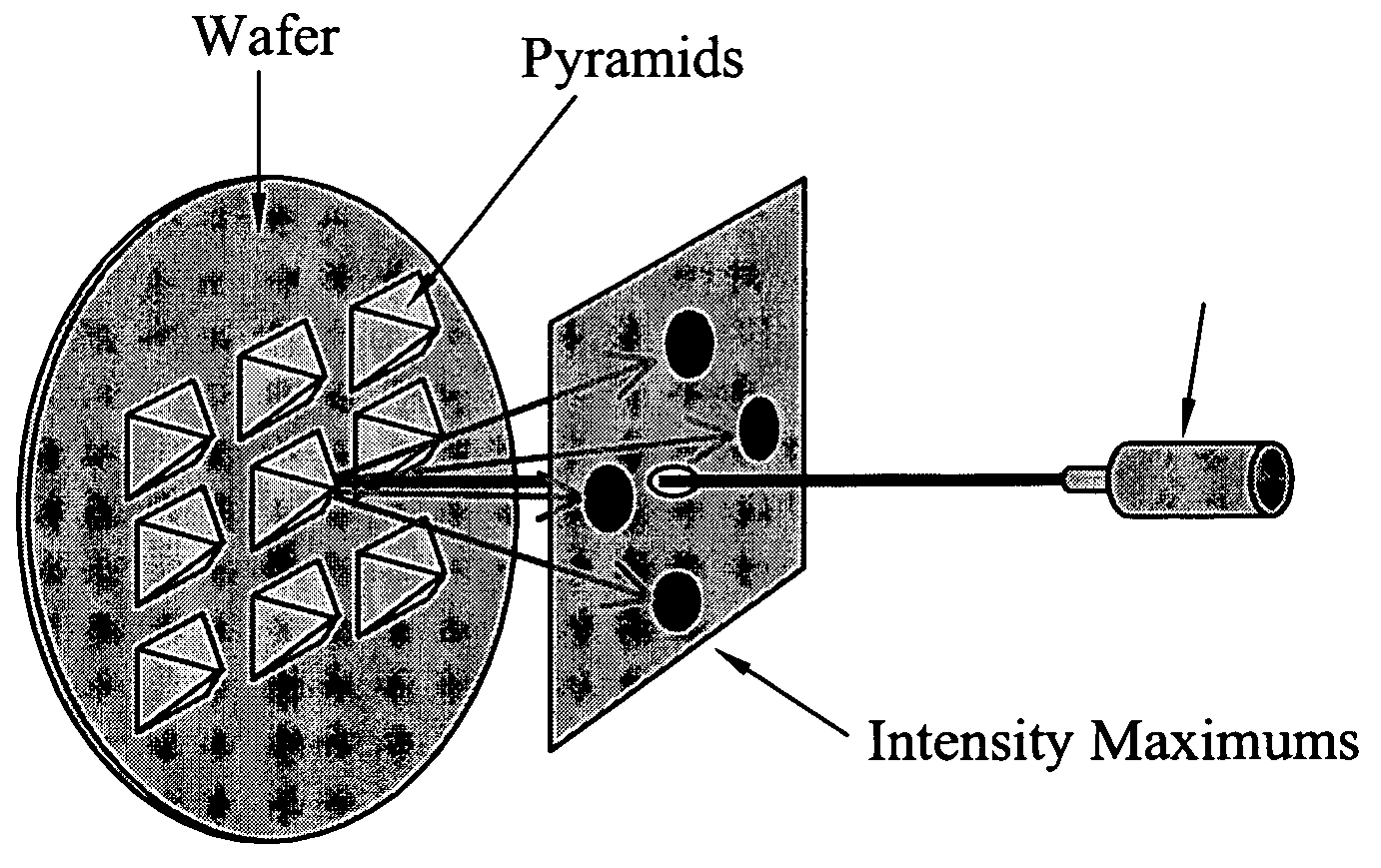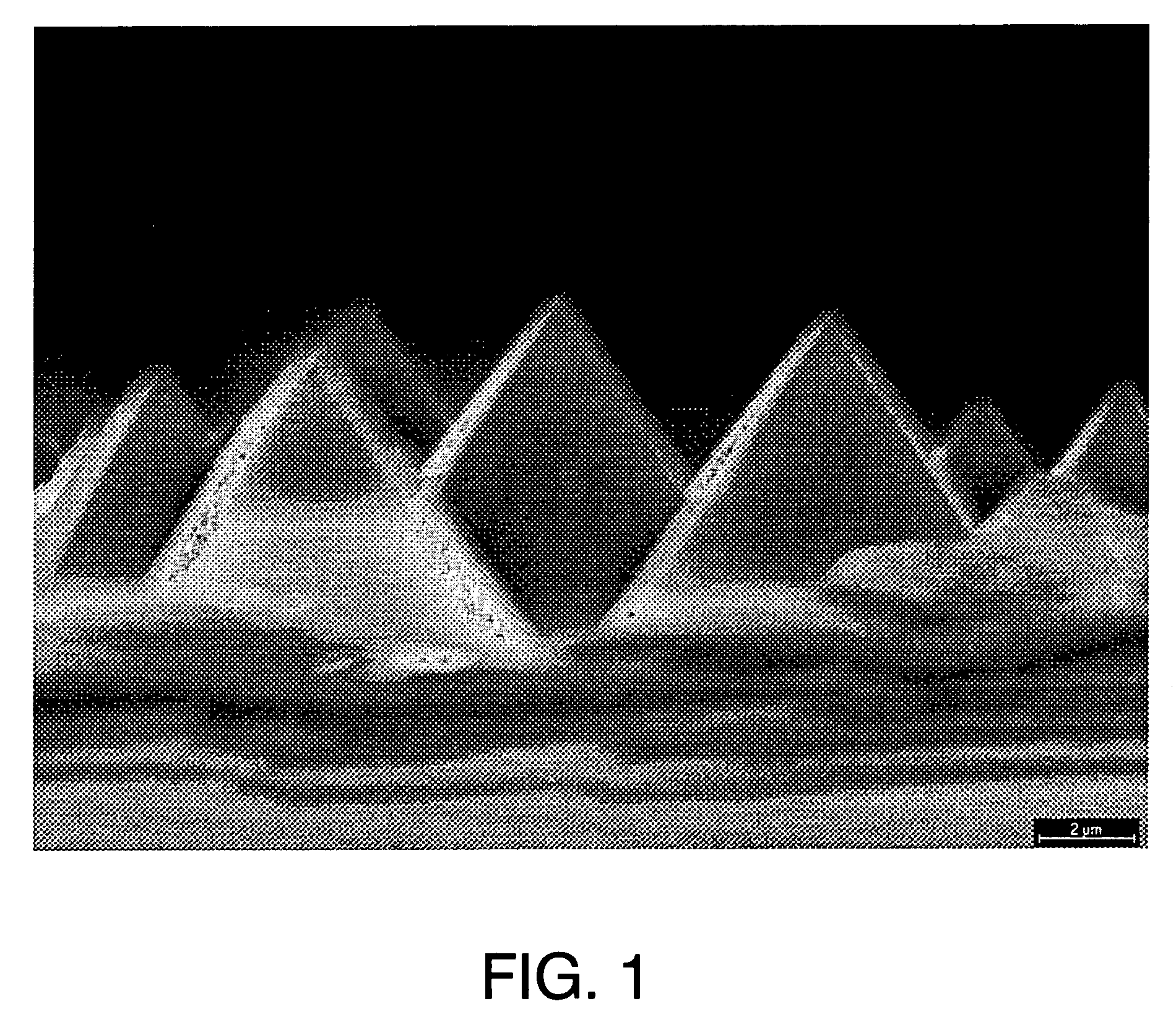Optical method and device for texture quantification of photovoltaic cells
a technology of photovoltaic cells and optical methods, applied in measurement devices, instruments, scientific instruments, etc., can solve the problems of high cost of crystalline materials, damage to analyzed areas, and difficulty in quality control systems of cell texture, etc., and achieve the effect of less intensity
- Summary
- Abstract
- Description
- Claims
- Application Information
AI Technical Summary
Problems solved by technology
Method used
Image
Examples
Embodiment Construction
[0042] As described above, the method entails determining the pattern of reflectance associated to a textured surface (particularly those Si surfaces that have been subject to chemical etching to attain pyramidal shapes) that is originated by the light of a laser beam with normal incidence. This pattern is captured on a flat screen as shown on FIG. 3a. According to the laws of reflection, the expected pattern for a surface composed of equal pyramid shapes would be composed of four points symmetrically located around the axis of the incoming beam, however, the presence of defects, non-textured areas, etc., causes an increase of the normal reflectance in detriment of the intensity associated to the texturing, which is the bases of the present method.
[0043] The geometry of the screen may be adapted to the circumstances of the design. FIGS. 3a and 3b, respectively, show some of the alternatives that include spherical or semi-spherical screens, in which the wafer is placed in the middle...
PUM
| Property | Measurement | Unit |
|---|---|---|
| tilt angle | aaaaa | aaaaa |
| diameter | aaaaa | aaaaa |
| 2θ | aaaaa | aaaaa |
Abstract
Description
Claims
Application Information
 Login to View More
Login to View More - R&D
- Intellectual Property
- Life Sciences
- Materials
- Tech Scout
- Unparalleled Data Quality
- Higher Quality Content
- 60% Fewer Hallucinations
Browse by: Latest US Patents, China's latest patents, Technical Efficacy Thesaurus, Application Domain, Technology Topic, Popular Technical Reports.
© 2025 PatSnap. All rights reserved.Legal|Privacy policy|Modern Slavery Act Transparency Statement|Sitemap|About US| Contact US: help@patsnap.com



